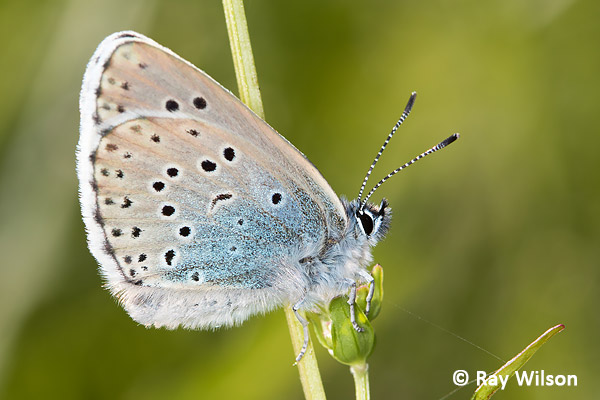


Large Blues have a very interesting life cycle and are completely reliant on ants for the survival of their late-instar larvae in a parasitic relationship that begins when the larvae reach their fourth instar. Up until that stage, the larvae lead a fairly normal life, feeding on the leaves of thyme or marjoram, but sometime after their third moult they drop to the ground and wait for a passing Myrmica ant, particularly M. sabuleti, to pick it up and take it back to the ant's nest. The method the caterpillar uses to attract the ants and prevent the ants from killing and eating it are yet to be definitively determined but it is thought to be at least partially due to the secretion of species-specific pheremones which trick the ants into treating the larva as one of their own. Once the larva is safely in the ant's nest it turns carnivore and prey's on its host's larvae. Mortality of the caterpillars within the ant's nest is quite high, so the mimicry is not completely effective. However, If their deception is successful the larva will continue to prey on the ant larvae and overwinter within the nest before pupating the following spring. When the adult emerges from its pupa, it walks out of the nest, unmolested by the ants, before starting to pump haemolymph into their wings to expand them to their full size.
There appears to be a lot of confusion about the scientific name of this species, with it also being referred to as Maculinea arion or Glaucopsyche arion in the European butterfly field guides currently in print.

Ray Wilson owns the copyright of all images on this site.
They may not be used or copied in any form without prior written permission.
raywilsonphotography@googlemail.com